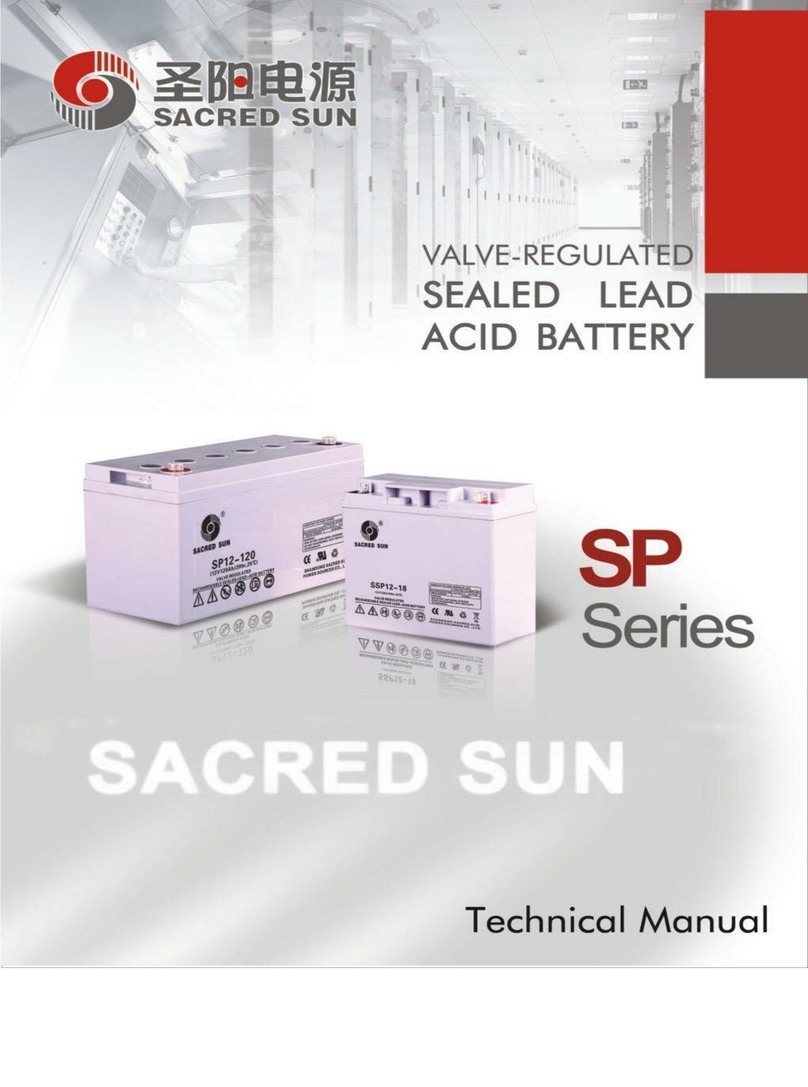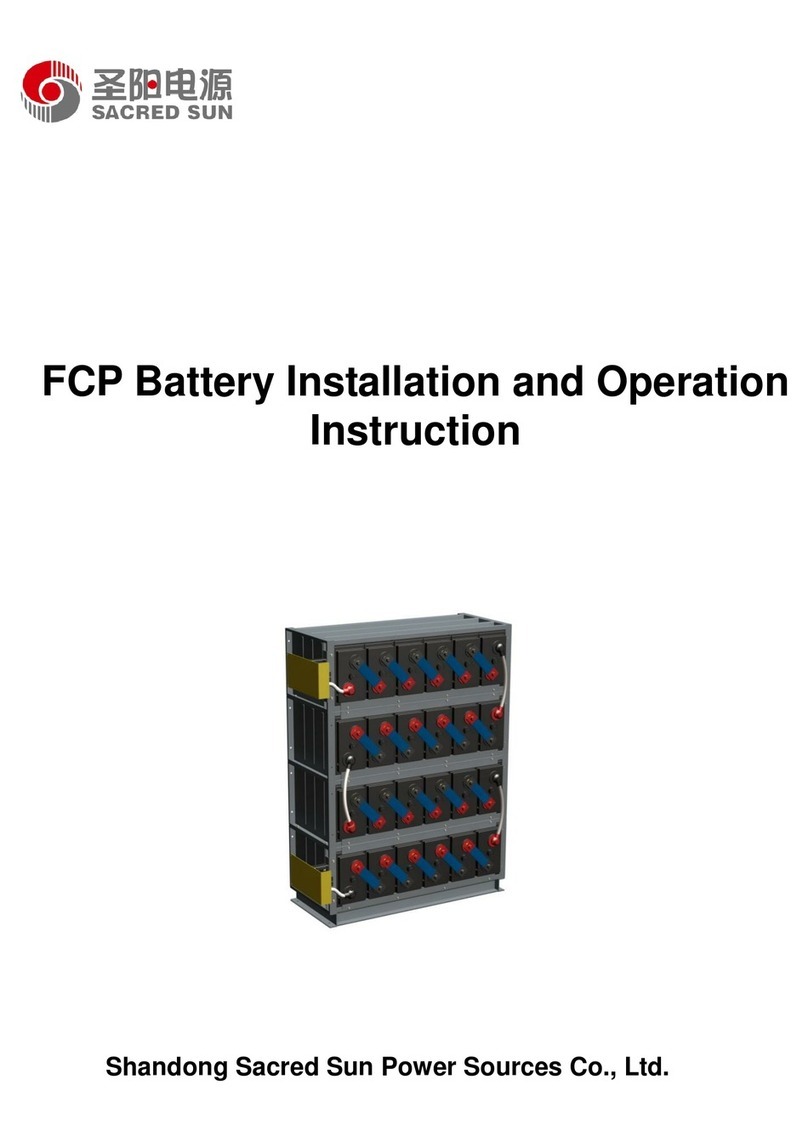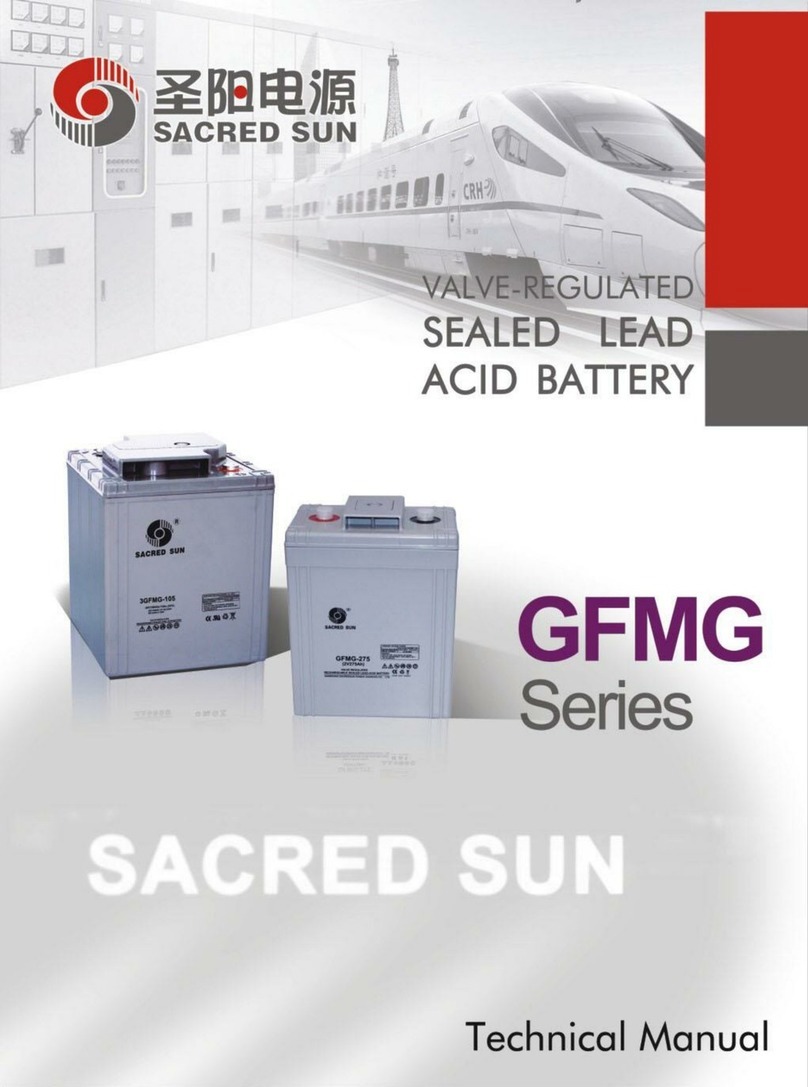
C
on
ten
t
s
Chapter I: Product Introduction
1. Product Characteristics ...............................................................................................01
2. Main Applications ........................................................................................................02
3. Battery Construction ....................................................................................................02
4. General Specification ..................................................................................................03
5. VRLA Technology ........................................................................................................04
Chapter II: Electrical Characteristics
1. Performance Curve ...................................................................................05
2. Performance Data ........................................................................................................06
Chapter III: Operation and Maintenance
1. Security Instruction ......................................................................................................09
2. Discharge.................................................................................................10
3. Temperature Effect On Battery Capacity .........................................................10
4. Temperature Effect on Battery Service Life.....................................................11
5. Floating Charge And Equalizing Charge .........................................................11
6. Recharge .................................................................................................13
7. Storage..................................................................................14
8. Installation ................................................................................................14
9. Connection ...............................................................................................14
10. Commissioning .........................................................................................15
11. Maintenance .............................................................................................15




































